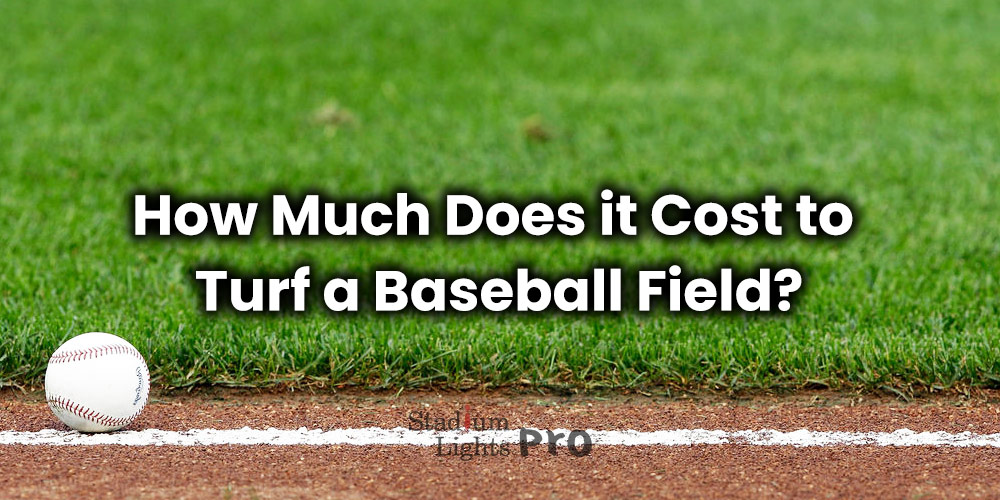This article provides a brief overview of the cost of turfing a baseball field. It covers the factors that influence the cost, average cost estimates, and ways to save money. It is suitable for individuals, organizations or communities who are responsible for maintaining baseball fields, and who are looking to understand the costs involved in turfing a baseball field.
Turfing a baseball field entails installing a grass or artificial turf surface on the playing field. This process includes preparing the ground, laying down the turf, and maintaining it to ensure it is safe and playable for games.
Proper field maintenance is crucial for safety and game quality. A well-maintained field reduces the risk of injuries to players, and ensures that the playing surface is consistent, providing a fair and enjoyable experience for all players. A field that is not properly maintained can lead to poor drainage, uneven turf, and an overall poor playing experience. Additionally, a well-maintained field can increase the lifespan of the turf, saving money on maintenance and replacement costs in the long run.
Table of Contents
ToggleCost to turf a baseball field
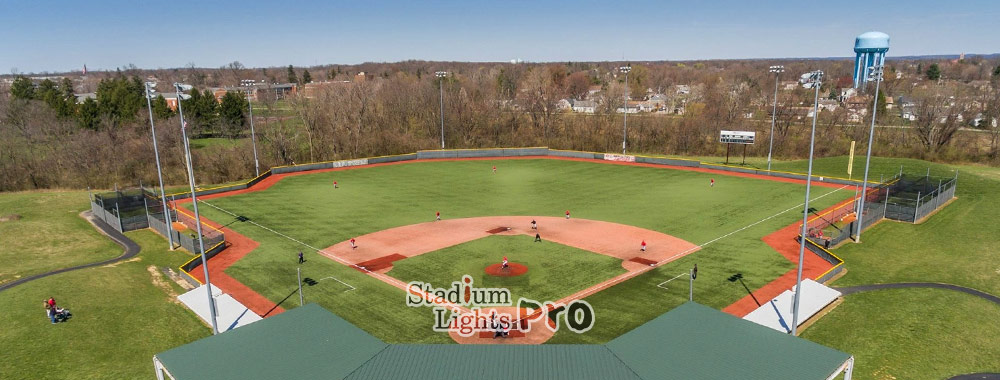
The cost of turfing a baseball field can vary widely depending on several factors such as the size of the field, the type of turf selected, the location of the field, and any additional features or equipment needed.
Here is an example of a breakdown of the costs involved in turfing a baseball field:
Materials
- Turf (artificial or natural grass): $3-$10 per square foot
- Drainage and irrigation system: $15,000 – $50,000
- Maintenance equipment: $5,000 – $10,000
Labor
- Site preparation: $10,000 – $25,000
- Installation of turf, drainage and irrigation systems, and any additional equipment: $20,000 – $50,000
- Maintenance and repair: $5,000 – $10,000
Total: $55,000 – $135,000
These cost estimates are approximate and can vary depending on the specific circumstances of each project. The location, the shape of the field, the level of complexity of the work required and the type of turf selected can all affect the final cost.
Cost of replacing baseball field turf vs installing new turf
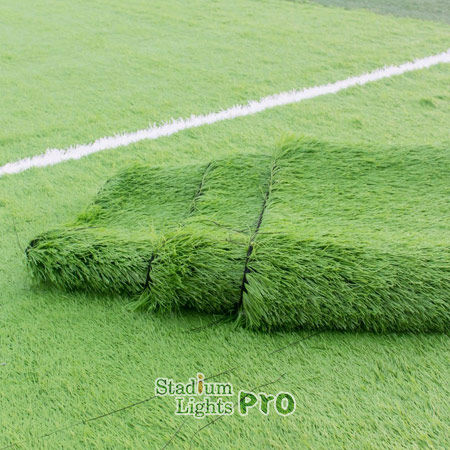 The main difference between installing a new baseball field turf and replacing the old field turf is that in the former, the ground is prepared and leveled to create a new field, whereas in the latter, the old turf is removed and replaced with new turf on the existing field.
The main difference between installing a new baseball field turf and replacing the old field turf is that in the former, the ground is prepared and leveled to create a new field, whereas in the latter, the old turf is removed and replaced with new turf on the existing field.
The cost difference between installing a new baseball field turf and replacing the baseball field turf can vary depending on several factors such as the size of the field, the type of turf selected, the location of the field, and any additional features or equipment needed.
Installing a new baseball field turf typically involves the following costs:
- Site preparation: $10,000 – $25,000
- Materials: Turf, drainage and irrigation systems, maintenance equipment
- Labor: Installation of turf, drainage and irrigation systems, and any additional equipment, maintenance and repair
Replacing the baseball field turf typically involves the following costs:
- Removal of old turf: $5,000 – $10,000
- Materials: Turf, drainage and irrigation systems (if needed), maintenance equipment
- Labor: Installation of new turf, drainage and irrigation systems (if needed), and any additional equipment, maintenance and repair
As you can see, the cost of installing a new baseball field turf will be higher than replacing the baseball field turf as it includes the cost of site preparation and leveling the ground. But it’s worth noting that this is an approximate cost and it’s always recommended to get quotes from multiple sources and consider all factors when planning and budgeting for either installing a new baseball field turf or replacing the baseball field turf.
Factors that influence the cost of turfing a baseball field
Size of the field
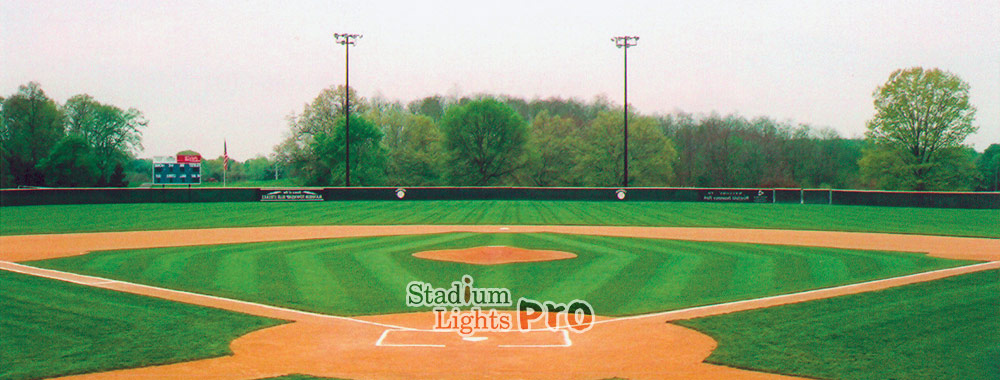
The size of the baseball field is a major factor that can affect the cost of turfing it. A larger field will require more turf, which will increase the cost of materials. Additionally, a larger field will take more time and labor to install and maintain, which will also increase the cost.
For example, a small youth league field may only require a few thousand square feet of turf, while a high school or college field may require 10,000 to 20,000 square feet, and a professional or major league field may require 30,000 or more square feet. The larger the field, the more materials and labor will be required, and the higher the cost will be.
Another factor is the shape of the field, a big field with irregular shape will be more complex to work on and will require more labor than a regular shape field, thus increasing the costs.
Type of turf selected
There are two main types of turf: natural grass and artificial turf.
Natural grass is the traditional choice for baseball fields and is generally less expensive to install, but it requires more maintenance and can be more costly in the long run. Natural grass needs regular mowing, fertilizing, and watering to keep it healthy and playable, and it can become damaged by heavy use or poor weather conditions.
Artificial turf is a more recent development and is becoming increasingly popular for baseball fields. It is more expensive to install than natural grass, but it requires less maintenance and can last for many years. Artificial turf is made of synthetic fibers that are designed to mimic the look and feel of natural grass. It’s more durable and can withstand heavy use, and it’s easy to maintain, it don’t need watering or mowing.
The type of turf selected will also depend on the intended use of the field and the climate of the location. For example, if the field will be used frequently or in a dry or hot climate, artificial turf may be a better choice due to its durability and low maintenance requirements.
Labor costs
The installation and maintenance of a field require a certain level of skill and experience, and the cost of labor can vary depending on the contractor or company hired to do the work.
The cost of labor can include costs for:
- Site preparation, including grading and leveling the ground
- Installation of drainage and irrigation systems
- Laying down the turf, whether it is natural grass or artificial turf
- Maintenance and repair of the field, including mowing, fertilizing, and watering for natural grass fields, and cleaning and infill replacement for artificial turf fields
The cost of labor can also vary depending on the location of the field. Fields in urban areas may have higher labor costs due to higher wages and living expenses.
Hiring a professional contractor for the work can be more costly than using in-house labor or volunteers, but it can save time and ensure that the work is done correctly.
Drainage and irrigation systems
Drainage and irrigation systems are the components of a well-maintained baseball field. These systems help to ensure that the field remains playable even during periods of heavy rain or drought.
The cost of installing a drainage and irrigation system can vary depending on the size of the field, the type of system selected, and the location of the field. A simple drainage system may cost several thousand dollars, while a more complex system with multiple drainage pipes and catch basins can cost tens of thousands of dollars.
Irrigation systems cost also varies, for example a simple system with manual valves and sprinklers can cost around $10,000 to $15,000, while a more advanced system with automatic valves, sprinklers and weather sensors can cost between $20,000 and $50,000.
While these systems can be costly to install, they can save money in the long run by reducing the need for frequent maintenance and repairs to the field, and by reducing the risk of damage caused by heavy rains or drought.
Location and accessibility of the field
The location of the field can affect the cost of materials and labor. For example, fields located in remote or rural areas may have higher transportation costs for materials and equipment. Fields located in urban areas may have higher labor costs due to higher wages and living expenses.
Accessibility of the field can also affect the cost of installation and maintenance. A field that is easily accessible by large trucks and equipment will be cheaper to work on than a field that is difficult to reach or requires specialized equipment.
Moreover, if the field is located in a place with specific restrictions like a protected area, historical site or ecological reserve, it will increase the costs of the process as it will require extra permits, studies or environmental impact assessments.
Any additional features or equipment needed
Lighting
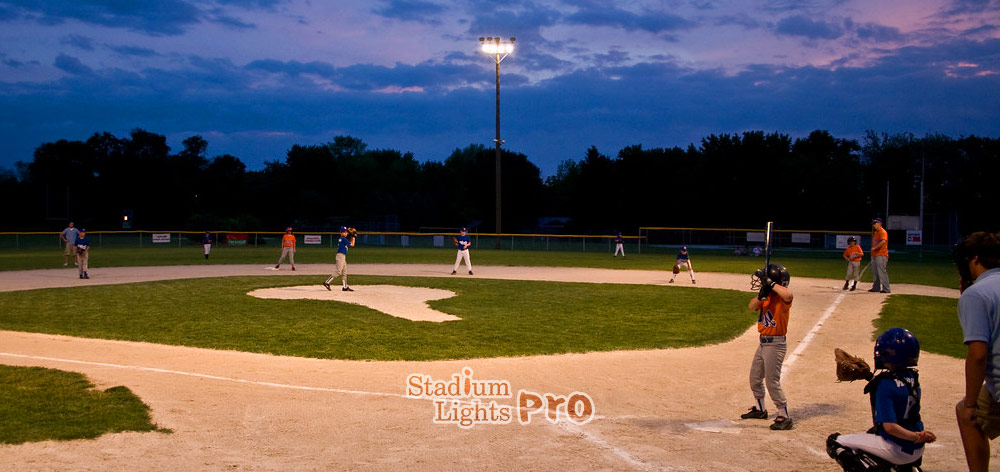
If the field will be used at night or in low-light conditions, lighting will be necessary. The cost of baseball field lighting can vary depending on the type of lights selected, the number of lights needed, and the cost of installation.
Fencing
Fencing around the field can help to keep the field secure and prevent unauthorized access. The cost of fencing can vary depending on the type of fencing selected, the size of the field, and the cost of installation.
Scoreboard
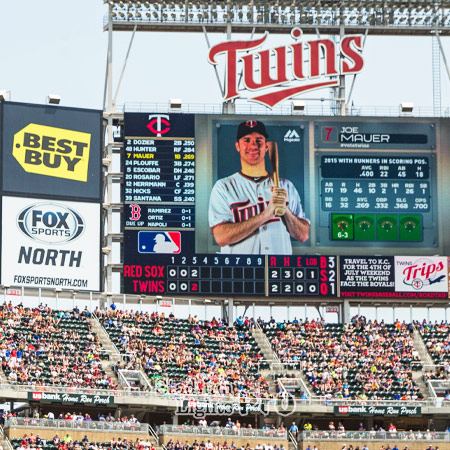 A scoreboard is an essential feature for any baseball field, and the cost of a scoreboard can vary depending on the type of scoreboard selected and the cost of installation.
A scoreboard is an essential feature for any baseball field, and the cost of a scoreboard can vary depending on the type of scoreboard selected and the cost of installation.
Benches and dugouts
Baseball fields typically include benches and dugouts for the players and coaches. The cost of benches and dugouts can vary depending on the type of benches and dugouts selected and the cost of installation.
Maintenance equipment
The field will require regular maintenance, and the cost of equipment such as mowers, fertilizers, and other tools will add to the overall cost of maintaining the field.
These additional features and equipment can add to the overall cost of the project, and it’s always recommended to consider these factors when planning and budgeting for the turfing of a baseball field.
Should I use natural turf or artificial turf on my baseball field?
Both natural grass and artificial turf have their own advantages and disadvantages when it comes to using them in a baseball field.
Natural grass is a traditional and popular choice for baseball fields, as it provides a good playing surface and a natural look and feel. The benefits and drawbacks of natural grass include:
| Pros of natural grass |
Cons of natural grass |
|
|
The advantages and disadvantages of artificial turf include:
| Pros of artificial turf | Cons of artificial turf |
|
|
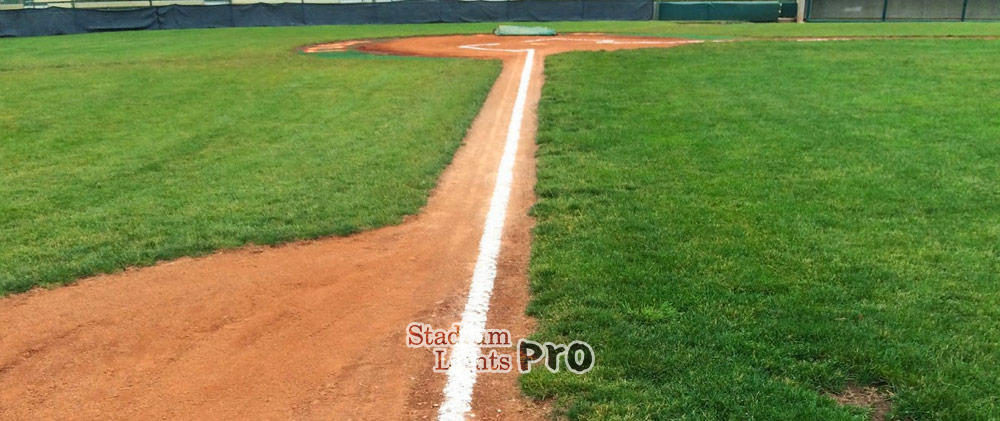 When deciding whether to use natural grass or artificial turf in a baseball field, it’s required to consider the specific needs and requirements of the field, such as the frequency of use, the budget, and the level of maintenance required.
When deciding whether to use natural grass or artificial turf in a baseball field, it’s required to consider the specific needs and requirements of the field, such as the frequency of use, the budget, and the level of maintenance required.
In general, if you are looking for a traditional and natural look, natural grass is a good choice, but it requires a lot of maintenance, and it can be affected by the weather. On the other hand, if you want low maintenance, and a surface that can be used in all weather conditions, artificial turf could be a good choice, but it’s more expensive to install and it may not provide a natural look and feel.
Maintenance cost of a baseball turf
Here is an example of a breakdown of the costs involved in maintaining a baseball field turf:
| Types of maintenance | Cost |
| Mowing | $500 – $1,000 per month |
| Fertilization | $1,000 – $2,000 per year |
| Aeration | $1,000 – $2,000 per year |
| Topdressing | $500 – $1,000 per year |
| Disease and pest control | $500 – $1,000 per year |
| Repair and replacement of damaged turf | $1,000 – $5,000 per year |
| Equipment and tool maintenance and replacement | $500 – $1,000 per year |
| Total turf maintenance cost | $5,000 – $13,000 per year |
Why do we need to mow the baseball turf regularly?
Consistency of playing surface
Mowing helps to keep the turf at a consistent height, which is crucial for both the appearance of the field and the safety of the players. It helps to ensure that the field has an even playing surface that is free of bumps and unevenness, which can lead to injuries.
Health of the turf
Mowing helps to remove the dead grass and foliage, which can lead to an unhealthy and unsightly field. Regular mowing helps to promote new growth and improve the overall health of the turf.
Pest and disease control
Mowing helps to control pests and diseases by removing the conditions that they thrive in. It also helps to prevent the spread of diseases by removing the infected grass and allowing the healthy grass to grow.
Appearance
Mowing helps to maintain the overall appearance of the field by keeping the turf at a consistent height and removing dead or diseased grass. A well-maintained field can have a positive impact on the players and the community.
Cost-effective
Regular mowing is a cost-effective way to maintain the health and appearance of a baseball field turf. The cost of mowing is relatively low compared to the cost of other maintenance tasks such as fertilization, aeration, and topdressing.
What is the importance of fertilizing baseball turf?
Nutrient provision
Baseball turf, like any other plants, needs essential nutrients such as Nitrogen, Phosphorus and Potassium to grow and stay healthy. Fertilization helps to provide these nutrients and ensure that the turf has the necessary resources to grow and stay healthy.
Improving the color and appearance
Fertilization helps to improve the color and appearance of the turf. It promotes the growth of healthy, green grass, which can make the field look more attractive.
Disease and pest control
Fertilization can help to control pests and diseases by providing the turf with the necessary nutrients to grow strong and resist disease and pests.
Root development
Fertilization helps to promote healthy root development, which is essential for the overall health of the turf. Strong roots help the turf to absorb water and nutrients more efficiently and resist drought and disease.
Cost-effective
Fertilization is a cost-effective way to maintain the health and appearance of a baseball field turf. It is less expensive than other maintenance tasks such as aeration and topdressing, and it can help to prevent more expensive issues from occurring in the future.
What is aeration and why do we need aeration on turf field?
Aeration is the process of making small holes in the soil to allow air, water, and nutrients to reach the roots of the grass. This helps to promote healthy growth and prevent issues like compacted soil, thatch buildup, and poor drainage. Aeration is especially crucial on turf fields, as heavy use can lead to compacted soil and reduced oxygen levels in the root zone. Aeration helps to alleviate compaction and ensure that the roots of the grass have access to the necessary resources to thrive.
Why is topdressing necessary for turf maintenance?
Topdressing is the process of applying a layer of material, such as sand or compost, to the surface of a turf field. Topdressing is needed for baseball turf maintenance because it helps to improve the overall health and appearance of the field.
One of the main benefits of topdressing is that it can help to level out uneven areas of the field, which can improve the playing surface and reduce the risk of injuries. Topdressing also helps to improve drainage, which prevents issues like puddling and poor field conditions.
Another benefit of topdressing is that it can help to maintain the thickness and density of the turf, which is essential for maintaining a consistent playing surface.
Topdressing also helps to add organic matter to the soil, which can improve the overall health of the turf by providing it with essential nutrients and microorganisms. Furthermore, it can also help to control thatch buildup, which can lead to poor drainage and reduced root growth.
Why we need disease and pest control?
Disease and pest control help to keep the field in good condition and prevent issues that can negatively impact the playing surface and the health of the grass.
Diseases such as brown patch, dollar spot and take-all root rot can cause damage to the turf, leading to discoloration, thinning, and bare spots on the field. If left untreated, diseases can spread quickly and cause significant damage to the field.
Pests such as grubs, chinch bugs and mole crickets can also cause damage to the turf by feeding on the roots of the grass. This can lead to thinning, discoloration, and bare spots on the field. Pests can also attract animals like moles, skunks and raccoons that can damage the field even further.
Preventing and controlling diseases and pests is needed for maintaining the overall health of the turf and preserving the playing surface. This can include regular monitoring of the field for signs of disease or pests, as well as implementing appropriate control measures, such as fertilization, irrigation, and the use of pesticides and fungicides when necessary.
How to repair damaged baseball turf?
Repairing damaged baseball turf involves addressing and fixing areas of the field that have been damaged or worn down.
One of the main steps in repairing damaged baseball turf is to identify the cause of the damage. This can include factors such as heavy use, poor drainage, disease, pests, or lack of proper maintenance. Once the cause of the damage has been identified, appropriate steps can be taken to address it.
To repair damaged areas of the field, we may first remove any debris or thatch that may be present. This can include removing dead grass, leaves, or other debris that may be impeding new growth.
Next, the damaged areas should be aerated and topdressed to improve soil quality and drainage. A good quality topdressing mix containing soil, compost and sand can be used. This will also help to level out uneven areas of the field and promote new growth.
After that, the damaged areas should be seeded or sodded with a suitable turfgrass variety. This will help to restore the playing surface and improve the overall appearance of the field.
Finally, we can maintain the repaired areas with regular watering, fertilization, and mowing. This will help to promote healthy growth and ensure that the field stays in good condition.
What is equipment and tool maintenance?
Proper maintenance of equipment and tools is essential for keeping them in good working condition and prolonging their lifespan. This can include regular cleaning, lubrication, and repair or replacement of worn or damaged parts.
For example, we need to regularly clean equipment such as mowers and aerators to remove any grass clippings or debris that may have accumulated. This can help to prevent issues like clogged blades or equipment failure.
Lubrication is also crucial for maintaining equipment and tools, as it helps to reduce friction and wear on moving parts. This can include regular oil changes, greasing of bearings and gears, and lubricating any other moving parts on the equipment.
Regularly inspecting equipment and tools for any signs of wear or damage is of the essence. If any issues are found, they should be addressed immediately to prevent further damage or equipment failure. This can include replacing worn blades, repairing or replacing damaged parts, and ensuring that all safety features are functioning properly.
How can I save on the cost of installing baseball field turf?
Using a lower-cost turf option
Using a lower-cost turf option is one way to save money when turfing a baseball field.
The cost of turf can vary widely depending on the type of turf selected, with natural grass typically being less expensive than artificial turf. Artificial turf is more expensive to install, but it requires less maintenance and can last for many years.
Another option to consider is the use of hybrid turf, which combines natural grass with artificial fibers. This type of turf is more durable than natural grass and requires less maintenance than artificial turf, making it a cost-effective option.
We may also consider the intended use of the field and the climate of the location when selecting a turf option. For example, if the field will be used frequently or in a dry or hot climate, artificial turf may be a better choice due to its durability and low maintenance requirements.
Using in-house labor or volunteers instead of hiring a contractor
By using in-house labor or volunteers, the cost of labor can be greatly reduced. This can be an effective way to save money, especially for smaller projects. However, using in-house labor or volunteers may require more time and effort, and may also require additional equipment or tools.
Using in-house labor or volunteers can also be a good way to involve the community and create a sense of ownership and pride in the field. Yet, turfing a baseball field requires a certain level of skill and experience, and it’s always recommended to consult with experts to ensure that the work is done correctly.
It’s necessary to consider if the volunteers have the necessary skills and experience to perform the work, and if they have the necessary safety equipment and training. If the work is too complex or require specific skills, it may be more cost-effective to hire a professional contractor.
Obtaining grants or sponsorships
Grants are financial awards provided by government agencies, non-profit organizations, or private foundations to support specific projects or programs. These grants can be used to cover the costs of materials, labor, or equipment.
Sponsorships are financial contributions provided by businesses or individuals to support specific projects or programs. These contributions can be used to cover the costs of materials, labor, or equipment.
Both grants and sponsorships can be a great way to fund a baseball field project, as they can help to offset the costs of materials, labor, and equipment.
Grants and sponsorships can be competitive and may require a significant amount of time and effort to apply for and secure. It’s recommended to research and apply for grants and sponsorships well in advance of the project, and to consult with experts to ensure that the application is complete and meets all requirements.
The process of obtaining grants or sponsorships may have some additional costs such as application fees, legal or accounting fees, or other administrative costs.
Common mistakes occur when turfing a baseball field
Not properly preparing the site
Before installing the turf, we may properly prepare the site by removing any debris, leveling the ground, and making sure the soil is of good quality. Failure to properly prepare the site can result in an uneven playing surface and may cause issues with drainage and irrigation. To fix this, the field must be prepared again and the new turf must be installed on top of it.
Not properly installing the drainage and irrigation systems
If the systems are not properly installed, it can cause issues with the turf and make it difficult to maintain. We need to properly evaluate the drainage and irrigation systems and make any necessary adjustments. This may include adding additional drainage channels, adjusting the slope of the field to improve drainage, or adjusting the irrigation system to ensure that the field is receiving the appropriate amount of water.
It’s also necessary to ensure that the drainage and irrigation systems are compatible with the type of turf selected and that they are properly connected to the water source.
Not properly maintaining the field
If the field is not properly maintained, it can cause issues with the turf such as:
- Disease and pest infestations
- Uneven playing surface
- Dead spots or bare areas
- Loss of color and appearance
We may establish a proper maintenance schedule and follow it consistently. This may include regular mowing, fertilization, aeration, and topdressing of the turf, as well as monitoring for and addressing any issues such as disease or pest infestations.
We need to ensure that the proper equipment and tools are used for maintenance and that the field is being used and maintained in accordance with the manufacturer’s recommendations.
Not choosing the right type of turf baseball field
Factors such as weather, foot traffic, and location should be considered when choosing the right type of turf.
For instance, if the field is located in an area with high temperatures and low rainfall, it’s recommended to choose a drought-resistant turf. If the field is located in an area with high rainfall and high humidity, we may choose a turf that is resistant to disease and fungus.
Additionally, if the field is going to be used frequently, we may choose a turf that is durable and can withstand heavy foot traffic. To resolve this, we can evaluate the type of turf currently being used and determine if it’s the right one for the specific circumstances of the field, such as weather, foot traffic, and location.
Conclusion
The cost to turf a baseball field can vary depending on several factors, including the size of the field, the type of turf being used, and the location of the field. The cost can also be affected by the level of play the field will be used for, with professional or college level fields typically costing more than those for high school or youth leagues.
If you’re interested in building a turf baseball field, we’re here to help. Contact us today to schedule a free consultation where we can provide you with valuable tips, cost-saving strategies, and information on financing options. Whether you’re planning a new field or looking to upgrade an existing one, our team has the expertise to guide you through the process and ensure a successful outcome.

